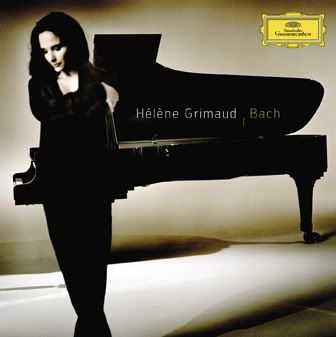The average music consumer is both prudent and judicious when it comes to buying a new CD. Few risk the unknown. For many, classical music is just that – the unknown. Venturing into the vast universe of classical music is intimidating enough, but making a confident, first-time purchase is next to impossible. It’s a jungle out there, and I’ve bore witness to the progression on countless occasions.
Unaware of what’s about to unfold, a confident consumer saunters into the classical music section of Borders armed with a torn slip of canary yellow paper – containing her scribbles for success – and a home-printed 25% off coupon. An air of excitement builds because someone is clearly on a mission. Perusing the available selection, our would-be customer narrows in on her primary target – a placard reading, A. Vivaldi.
This Ain't Your Frankie Valli's Four Seasons
 Confident fingers flip through the inventory. The very first copy of (you guessed it) Antonio Vivaldi’s Four Seasons is culled from the racks. With a false sense of accomplishment, a trap of deception is set. As if on cue, reading glasses emerge. A careful side-by-side comparison of the yellow slip of paper against the disc’s back tray card is made.
Confident fingers flip through the inventory. The very first copy of (you guessed it) Antonio Vivaldi’s Four Seasons is culled from the racks. With a false sense of accomplishment, a trap of deception is set. As if on cue, reading glasses emerge. A careful side-by-side comparison of the yellow slip of paper against the disc’s back tray card is made.Match not found.
Self confidence begins to waiver. A subtle wave of emotion induces the customer’s eyes to uncontrollably peer over her now lowered reading glasses. To her amazement, the CD bin presents the perplexed consumer with yet another copy of Antonio Vivaldi’s Four Seasons. She's completely oblivious to the fact that 1,200+ recorded versions of this 18th century classic exist. Confusion sets in.
At this moment, I can’t bear to watch, but like any good train wreck, I simply can’t resist.
With the 25% off coupon now tightly between her lips and the yellow crib sheet trampled underfoot on the latte-stained carpet, our victim appears to be fending off a frenzied attack by five different species of Antonio Vivaldi’s Four Seasons. Completely overwhelmed, backup is called. Unfortunately, the emo-loving Borders music specialist is also “classically challenged”, but somehow he manages to pry the clenched copies of Antonio Vivaldi’s Four Seasons from her fingers.
After moments of awkward conversation, lacking all-important nouns and verbs, the Borders employee flicks his unkempt jet-black hair away from his right eye, returns the copies of Vivaldi’s masterstroke to their appropriate place, and retakes his abandoned post at the Information Desk.
Stunned and bewildered, our once-confident consumer takes one last covert glance of Antonio Vivaldi’s Four Seasons from a safe distance. As many before her, she leaves Borders denied.
Could I have saved our customer from herself? Perhaps. But my mission is to observe, not intervene. Seriously people, would you take classical music advice from a scowling, long-haired, Motörhead t-shirt wearing mud puppy like me? I sincerely doubt it.
Classical Music for Dummies (by a Scowling, Long-Haired, Motörhead T-Shirt Wearing Mud Puppy)
Hélène Grimaud is my all-time favorite classical pianist. Something about her playing (good or bad) resonates with me. I’ve followed her recording career closely since late 1987, when I first purchased her studio performance of Chopin’s Ballade No. 1 in G Minor, Op. 23. Hélène Grimaud was an emerging teenage prodigy back in those days, and her playing has matured/developed wonderfully since.
 Her latest CD release, on the Deutsche Grammophon imprint, is simply entitled, Bach. This, her first all-Bach recording, not only contains compositions by Johann Sebastian Bach (1685-1750), but Bach transcriptions as well.
Her latest CD release, on the Deutsche Grammophon imprint, is simply entitled, Bach. This, her first all-Bach recording, not only contains compositions by Johann Sebastian Bach (1685-1750), but Bach transcriptions as well.Some time between the years 1717 and 1723 (the exact date is uncertain), Johann Sebastian Bach composed the Partita for Violin Solo No. 2 in D minor, BWV 1004. During the 16th and 17th centuries, a partita was the name given to a single instrumental piece of music, but Johann Sebastian Bach used it for collections of musical pieces; essentially, he used “partita” as a synonym for “suite”.
The Partita for Violin Solo No. 2 in D minor, BWV 1004 contains five movements. The fifth and final movement of the partita is known as the chaconne. A chaconne is a variation on a repeated short harmonic progression.
Italian composer Ferruccio Busoni (1866-1924) later transcribed the last movement of Johann Sebastian Bach’s partita from violin to piano. This legendary piece is known as Chaconne in D minor.
And you thought cover tunes and remixes were a late 20th century concept.
MrMudPuppy’s Metal Mud Puddle Challenge
The embedded video below is an excerpt from the Chaconne in D minor as performed by Hélène Grimaud. Give me three minutes and thirty-nine seconds of your life, and I'll share with you a prime example of classical music that stirs me at the deepest level.
Herein lies MrMudPuppy’s Metal Mud Puddle Challenge: When viewing/listening to the Chaconne in D minor, tell me what you think Johann Sebastian Bach was attempting to say through this glorious piece of music. What images appear in your mind’s eye? What feelings, emotions, and moods does it evoke in you? Go with your instincts, and let me know!
Post script: Hélène Grimaud is blessed/cursed with synesthesia; she not only hears the musical notes she plays, but sees them in vivid colors as well. Could you detect that in her performance?
Closing Words by Hélène Grimaud
Did Johann Sebastian Bach successfully convey his message to you? The following are Hélène Grimaud's perspectives and insights regarding the Chaconne in D minor:
Hélène Grimaud: The Chaconne started out as a focal point of this programme; it absolutely had to be there. It's a dance of life and death. We know Bach composed it at the time of the passing of his first wife, and though no composer's music is less crudely reflective of his personal life, it's still important to know what he was going through at any given time. This is the mightiest single movement he ever wrote; it's like the architecture of a cathedral, with each variation resembling light seen through a different stained-glass window. And playing it, you feel you're dancing with your own shadow. Its ending is another mystery; rather than closing things down, it opens the player up to every possible direction.

No comments:
Post a Comment